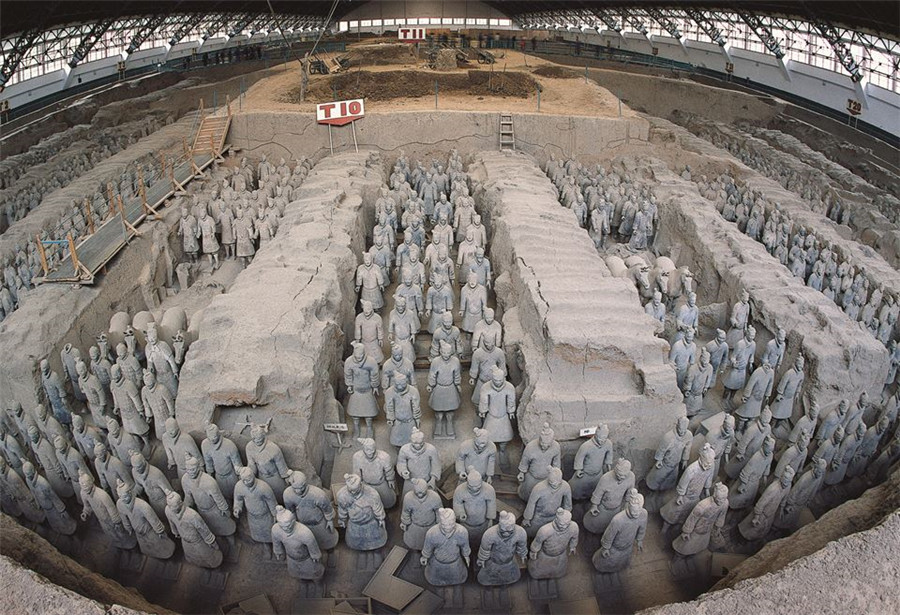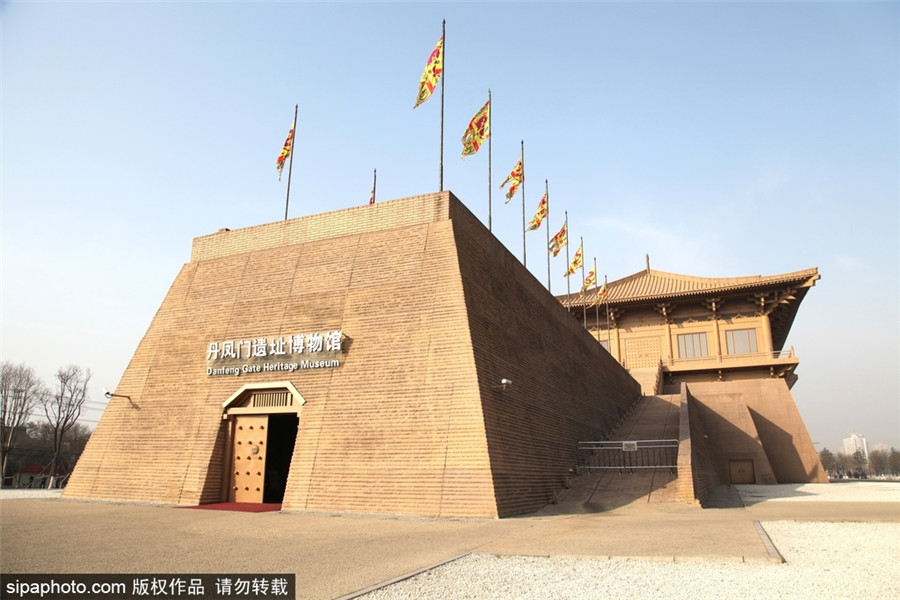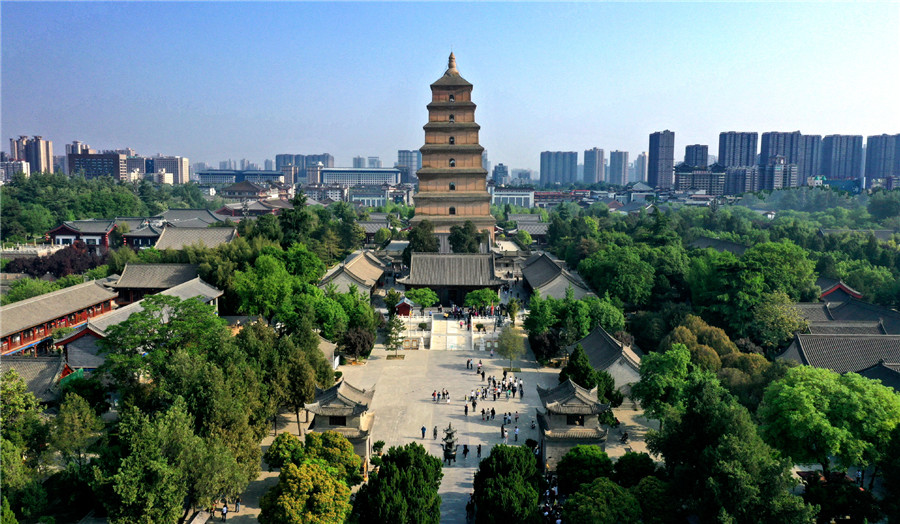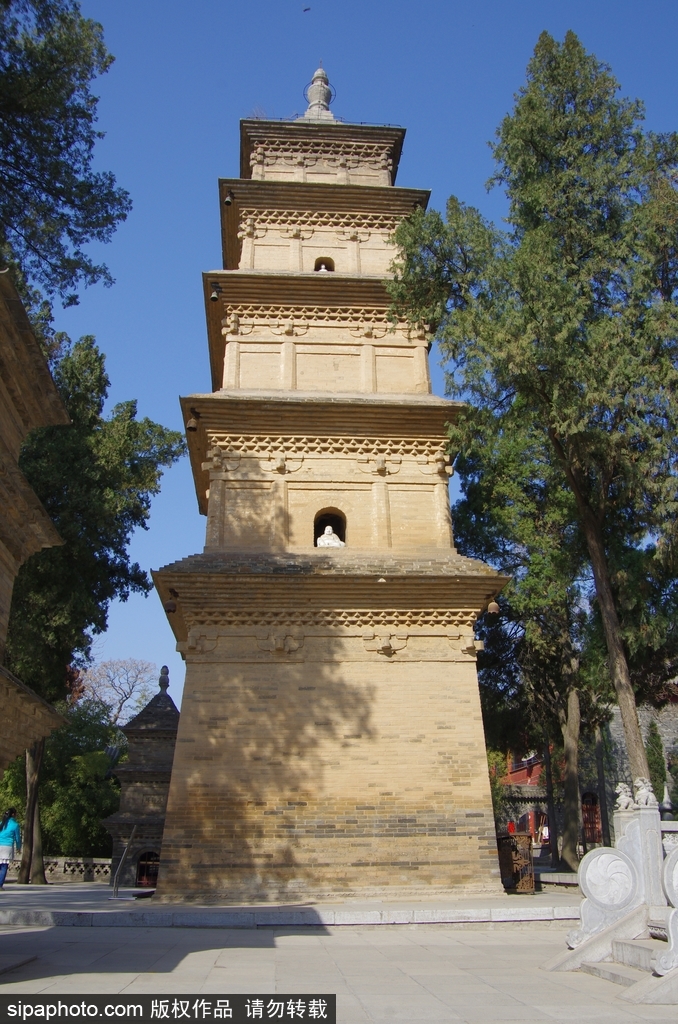DepthReading
Xi'an: Home to 6 UNESCO World Cultural Heritage sites

1. Mausoleum of the First Qin Emperor
The Mausoleum of the First Qin Emperor containing terracotta warriors and horses is located in Lintong county near Xi'an city. Constructed from 246 BC to 208 BC, the mausoleum was the first of its kind in Chinese history. With a height of 76 meters, the mausoleum is laid out in line with the dimensions of Xianyang, the capital of the Qin Dynasty (221-206 BC). It is composed of the inner compound and the outer compound, which have perimeters of 2.5 km and 6.3 km, respectively. The tomb is located in the southwest of the inner compound. The pits containing the terracotta army guarding the mausoleum were discovered in 1974.
The Qinshihuang Mausoleum is one of the world's largest imperial mausoleums. Although the actual tomb chamber has not been excavated yet, probes have determined that it is a luxurious underground palace with a unique structure and abundant funeral objects.
Mausoleum of the First Qin Emperor was listed as a cultural heritage site by UNESCO in December of 1987.
The Silk Road's Routes Network of the Chang'an-Tianshan Corridor - including historical monuments in China, Kazakhstan and Kyrgyzstan - was inscribed as a World Heritage Site in 2014. The following five sites in Xi'an are included in the routes.
Xi'an, the capital city of Northwest China's Shaanxi province, is home to six UNESCO World Cultural Heritage sites. As the China-Central Asia Summit is set to take place in Xi'an from May 18 to 19, and the city prepares to embrace attention from the world, let's take a look at these sites.

1. Mausoleum of the First Qin Emperor
The Mausoleum of the First Qin Emperor containing terracotta warriors and horses is located in Lintong county near Xi'an city. Constructed from 246 BC to 208 BC, the mausoleum was the first of its kind in Chinese history. With a height of 76 meters, the mausoleum is laid out in line with the dimensions of Xianyang, the capital of the Qin Dynasty (221-206 BC). It is composed of the inner compound and the outer compound, which have perimeters of 2.5 km and 6.3 km, respectively. The tomb is located in the southwest of the inner compound. The pits containing the terracotta army guarding the mausoleum were discovered in 1974.
The Qinshihuang Mausoleum is one of the world's largest imperial mausoleums. Although the actual tomb chamber has not been excavated yet, probes have determined that it is a luxurious underground palace with a unique structure and abundant funeral objects.
Mausoleum of the First Qin Emperor was listed as a cultural heritage site by UNESCO in December of 1987.
The Silk Road's Routes Network of the Chang'an-Tianshan Corridor - including historical monuments in China, Kazakhstan and Kyrgyzstan - was inscribed as a World Heritage Site in 2014. The following five sites in Xi'an are included in the routes.

3. Site of Daming Palace
Famous for its super-large scale and magnificent buildings, Daming Palace was the main royal palace in the Tang Dynasty (618 AD - 907 AD) where Tang emperors lived and dealt with state affairs.
It was the most famous palace complex in the Tang Dynasty, equivalent in size to 3 Versailles Palaces, 4.5 Forbidden Cities, 12 Kremlin Palaces, 13 Louvre Museums and 15 Buckingham Palaces.

4. Big Wild Goose Pagoda
The Big Wild Goose Pagoda in Xi'an is a masterpiece of China's Buddhist architecture. Originally built in 652 during the reign of Emperor Gaozong of the Tang Dynasty, it functioned to house Buddhist sutras that were brought from India by the monk Xuan Zang.
It is a masterpiece of China's Buddhist architecture and ancient pavilion-style brick pagodas, simple and beautiful in shape, moderate in proportions, and solemn and simple in style.

5. Small Wild Goose Pagoda
The Small Wild Goose Pagoda is located on the central axis of the Jianfu Temple in southern Xi'an. It was one of the two famous and important Buddhist pagodas erected in the Tang Dynasty about 1300 years ago. Jianfu Temple was first built in 684 AD in honor of the second emperor of the Tang Dynasty, Emperor Lizhi (named Gaozong on his accession), on the hundredth day after his death.
It is a typical example of the early Chinese square dense eaves brick pagoda, a landmark building where Buddhism was introduced to the Central Plains and was integrated into Han culture.

6. Xingjiao Temple Pagoda
Xingjiao Temple Pagoda in Xi'an was built in 1944. The pagoda houses the remains of a renowned Chinese Buddhist monk named Xuan Zang from the Tang Dynasty, who was famous for his trip to India to bring back Buddhist scriptures. It also possesses more than 10,000 volumes of Buddhist canons and many other precious cultural artifacts.
Category: English
DepthReading
Key words:
